There are so many ways to build a building! Seriously. Most of these are dependent on the location and what is required by the energy code, but a lot of them can also be chosen due to budget and labor knowledge.
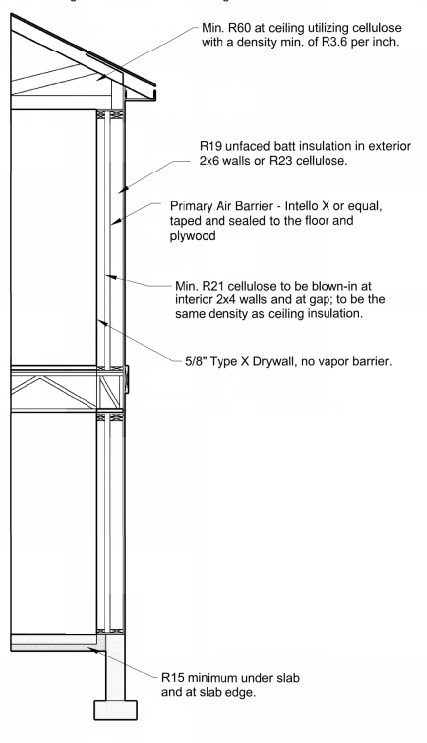
First off, you wouldn’t pack the same for a trip to the Rocky Mountains or for a trip to the Bahamas, so why would you build the same way? Short answer… one shouldn’t. The energy code has a climatic map that shows locations in the US and their applicable climate zone. This map’s origin is based on local vegetation and is also called the Koppen Climate Classification System.
The insulation (and vapor retarder) requirements differ in each climate zone and the IECC (International Energy Conservation Code) has different compliance tables for this. These tables are referred to as the “prescriptive route”. You can also comply with the energy code via the “performance route”, which most often is a HERS rating, or a “Home Energy Rating System Rating”. This is essentially the MPG for your home and will determine your projected utility bill (and ROI (return on investment) for any on-site renewable) for the lifetime of the building. A house built to code using the performance route requires that the building (size, type of assembles, insulation levels, level of airtightness, appliances, etc.) to be put into a computer model that then will generate a number. I’ll write more about HERS ratings in a later blog post.
The YCH was built in Climate Zone 5, with above code insulation levels. I personally am most familiar with the requirements in Climate Zone 6, so the following assemblies can be options for these locations.
Now, I’m going to start from ground up, just as you would build the place. Each assembly will be explained briefly with a quick list of pros and cons. Links for more detailed information and details will be provided for each one.
FOUNDATION
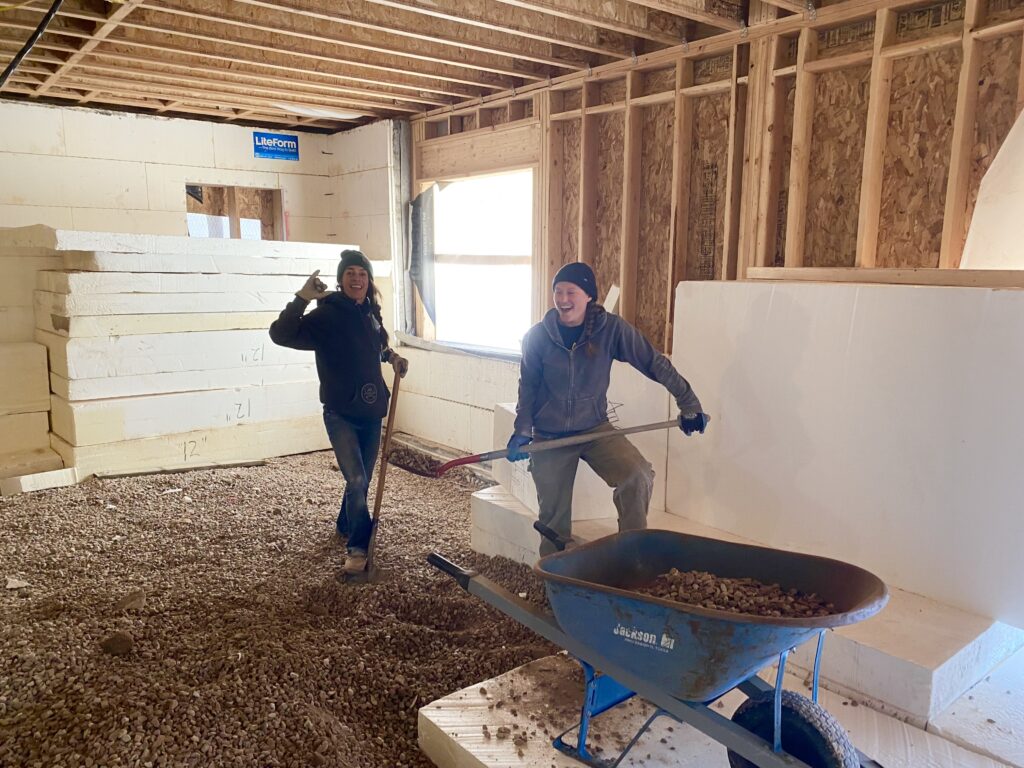
The foundation is basically what will hold up the structure and there’s a few options for what TYPE of foundation can be utilized. Note that a lot of the options depend on what type of soil you are building on and what the structural engineer will design. Some options for a foundation include SOG (slab on grade), crawlspace or a basement.
SOG (Slab-on-Grade)
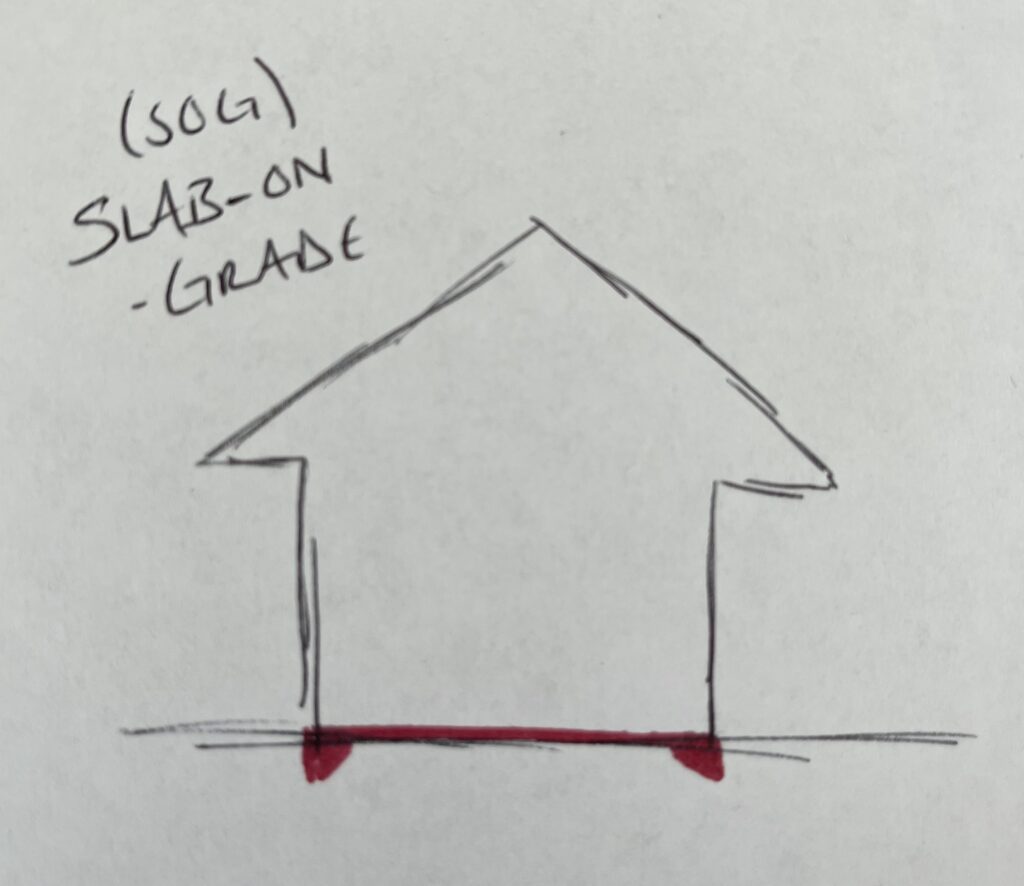
PROS –
- Typically cheaper than a crawlspace.
- Any ductwork will most likely be in the thermal envelope (unless it’s ran under the slab, in which it will need to be insulated).
- A “shallow frost protected footing” can be installed in lieu of footings (resulting in cost savings and less digging) in areas where frost is a concern.
CONS –
- The plumbing (and ductwork if ran under the slab) associated with the main floor will be under the slab and hard to access in the future.
- Any changes to the floor plan will be hard to do since the plumbing will need to be in place prior to pouring the concrete.
CRAWLSPACE
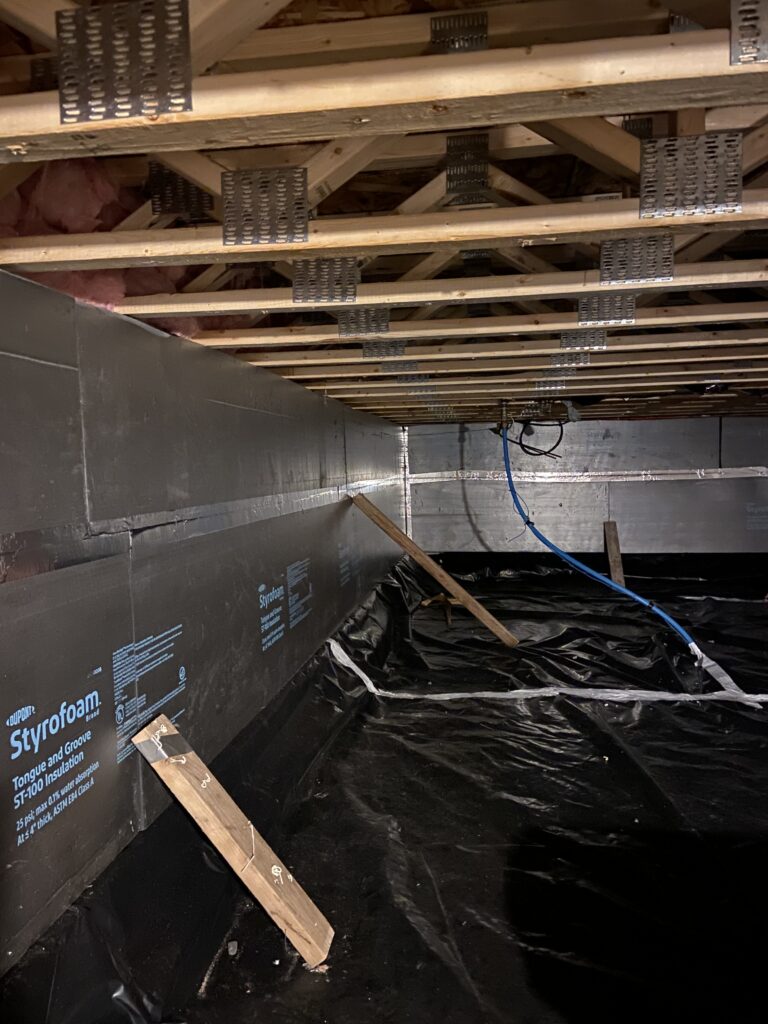
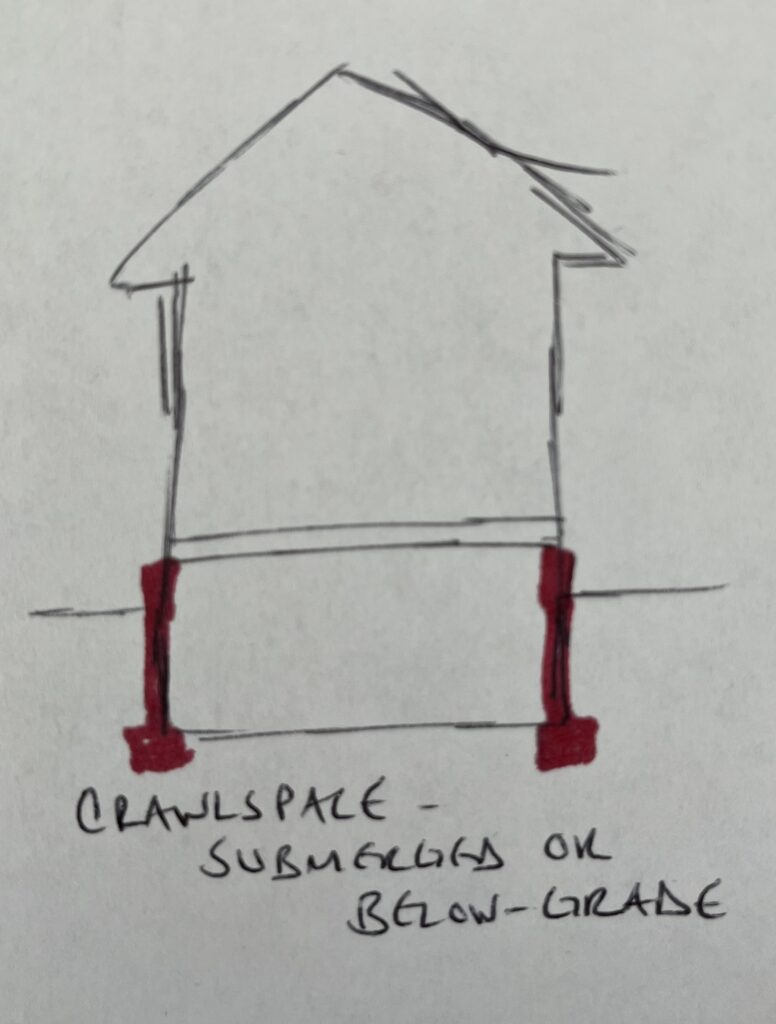
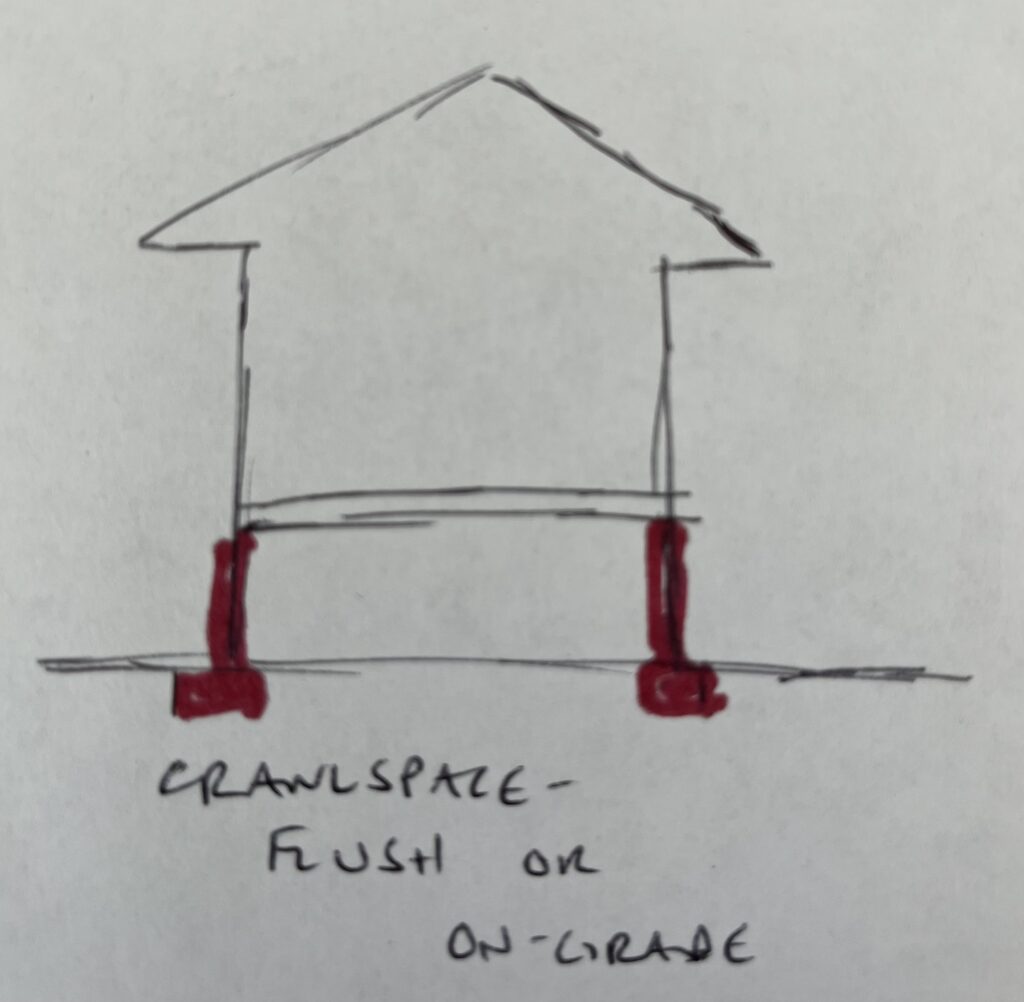
PROS –
- You’ll have access to any plumbing or ductwork under the main floor.
CONS –
- For many locations, radon is a serious threat and should be mitigated using a passive or active system, depending on the levels of radon present. If installing a crawlspace below grade, you are digging into rock which may contain radon. Be sure to get the site tested, install a passive system with means to install a fan on the system if the test results come back with levels of 4 pCi/L (picocuries per liter) or more.
- Anything built underground is prone to moisture and this moisture will need to be dealt with to ensure proper air quality in your home and to increase the lifetime of the building materials. Ways to mitigate moisture include proper air sealing, insulation and a vapor barrier on the soil that is attached to the foundation wall.
- For Climate Zone 5 and above, a conditioned crawlspace should be the only crawlspace that is considered. This means that there are no vents in the crawlspace, there is insulation on the foundation walls, plastic (vapor barrier) on the ground and the crawlspace is getting conditioned air from the rest of the house (more on this later) or a dehumidifier is installed.
BASEMENT
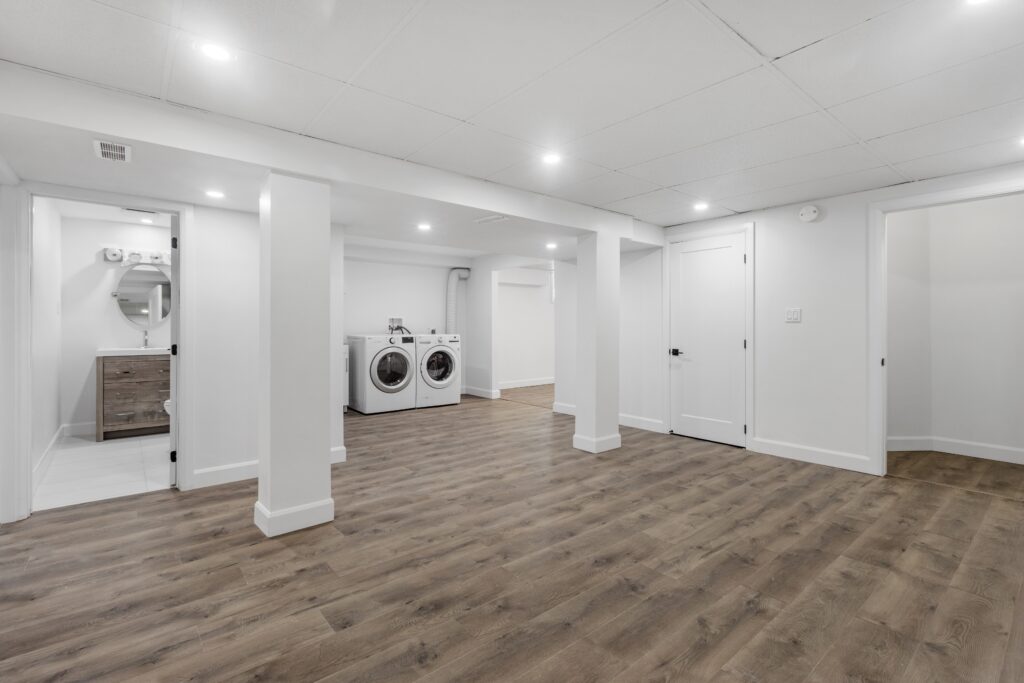
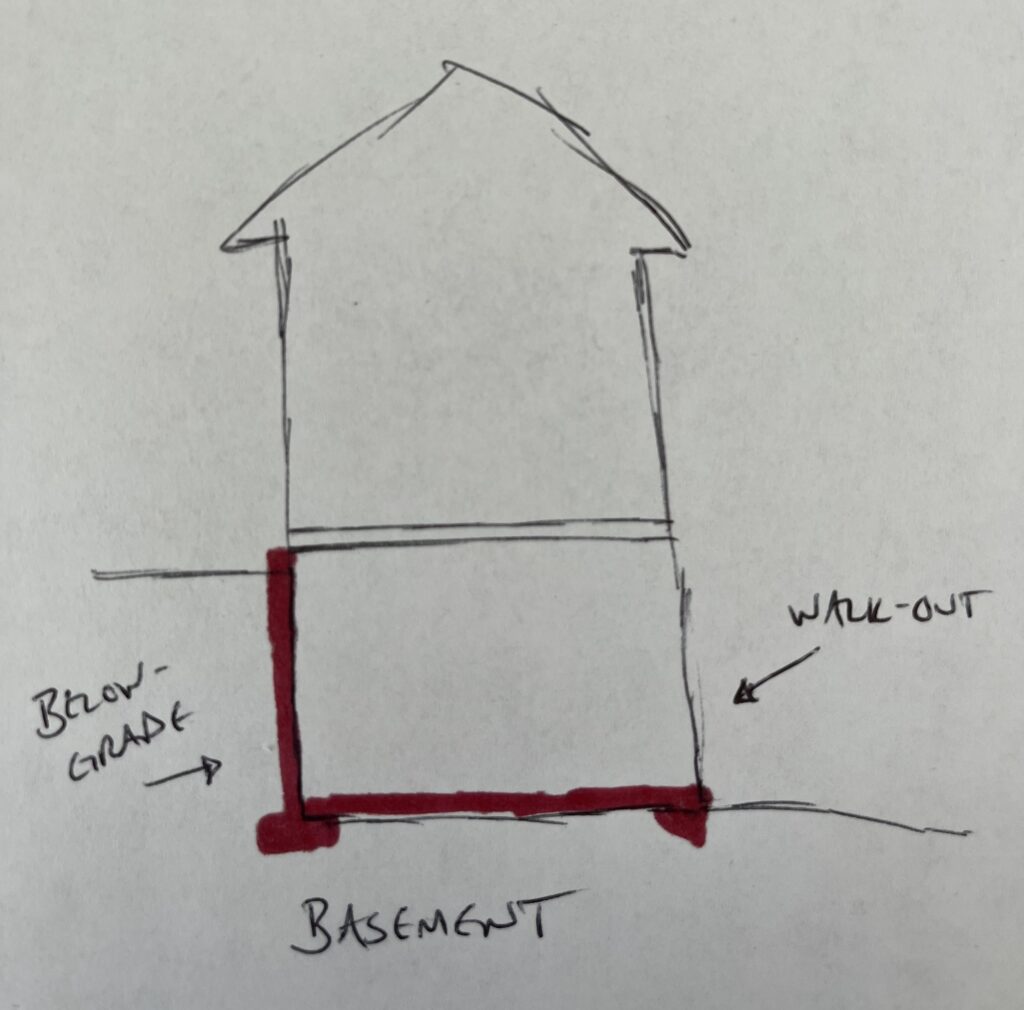
PROS –
- More livable square footage! Instead of a crawlspace, in which you cannot live in, you will have floor area under the main floor that can be used as livable space.
- This livable space increases property value.
- Either an ADU (accessory dwelling unit) or flex space can be rented out for extra monthly income. Note that if a second full kitchen is to be installed, it will require approvals from your local jurisdiction.
CONS –
- Costly… more digging and more concrete / materials in general. This, however, may be offset with the increase property value / rental income.
- Anything built underground is prone to moisture and this moisture will need to be dealt with to ensure proper air quality in your home and to increase the lifetime of the building materials. Ways to mitigate moisture include proper air sealing, insulation and installing a vapor barrier under the concrete slab.
Stay tuned for more information on the above-grade assemblies! This will include the rim joist, walls and roof.
